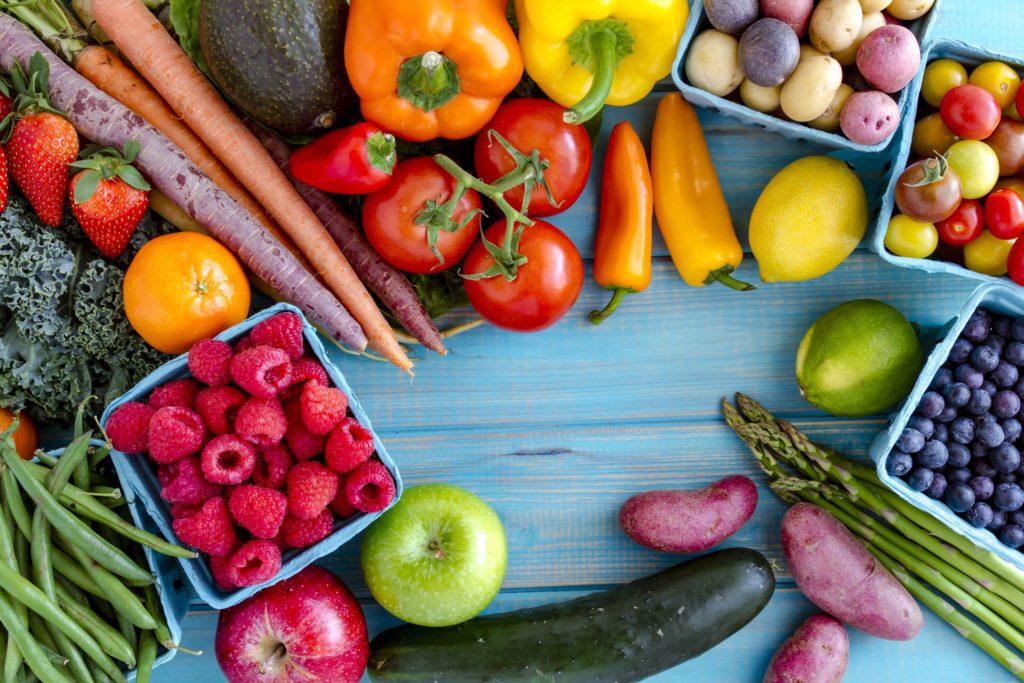RAW FOOD DIET
The Raw Food Diet, also known as the Living Food Diet or raw veganism, is a dietary lifestyle that involves eating raw, unprocessed, and often organic foods. According to proponents of this diet, cooking and processing foods destroy essential nutrients, enzymes, and natural flavors, and eating raw foods provides numerous health benefits.
The Raw Food Diet can be traced back to the early twentieth century when advocates of natural health and raw foodism began promoting the benefits of eating raw foods. Since then, the diet has grown in popularity and has been adopted by celebrities, athletes, and health enthusiasts all over the world.
This article will give an overview of the Raw Food Diet, including its definition, history, advantages, and disadvantages. By the end of this article, you will have a thorough understanding of this unique way of eating and will be able to determine whether it is appropriate for you.
The Raw Food Diet is defined as
The Raw Food Diet is a way of life that consists primarily of eating raw, uncooked, unprocessed foods. Fresh fruits and vegetables, nuts and seeds, sprouts, and seaweed are all examples. The goal is to consume as much food as possible in its natural state, without any cooking, baking, or roasting that might change its composition.
- A brief overview of the diet
The Raw Food Diet dates back to the early twentieth century when advocates of natural health and raw foodism began promoting the benefits of eating raw foods. The diet’s premise was that cooking and processing foods destroyed essential nutrients, enzymes, and natural flavors while eating raw foods provided numerous health benefits.
The Raw Food Diet has evolved over time and has been embraced by celebrities, athletes, and health enthusiasts all over the world. There are now numerous books, websites, and resources dedicated to the Raw Food Diet and its benefits, and it has grown to become one of the world’s most popular alternative diets.
An overview of the advantages and disadvantages
The Raw Food Diet is said to have numerous health benefits, such as improved digestion, increased energy levels, improved skin health, weight loss, and a lower risk of chronic diseases. However, there are some potential disadvantages to consider, such as difficulty getting enough protein, nutrient deficiencies, limited food options, time-consuming preparation, and social challenges, such as difficulty eating out or with others.
In the following section, we will go over the benefits and drawbacks of the Raw Food Diet in greater detail so that you can make an informed decision about whether this way of eating is right for you.
- Raw Food Diet Advantages
The Raw Food Diet has numerous advantages, including:
- Improved digestion: Raw food advocates claim that eating raw foods can help improve digestion and reduce symptoms of digestive problems like bloating, constipation, and acid reflux.
- Increased energy levels: Many Raw Food Diet followers report increased energy levels, improved mood, and a general sense of well-being.
- Improved skin health: The Raw Food Diet is said to help improve skin quality by reducing wrinkles and improving overall skin tone.
- Weight loss: The Raw Food Diet is a great option for weight loss because it is high in fiber and low in calories, making it an efficient way to lose weight.
- Lower risk of chronic diseases: The Raw Food Diet is said to lower the risk of chronic diseases like heart disease, diabetes, and certain types of cancer.
- The Raw Food Diet’s Drawbacks
While the Raw Food Diet has many advantages, there are some drawbacks to consider, including:
- Protein deficiency: The Raw Food Diet can be deficient in protein, which is an important nutrient for overall health. This can be especially difficult for athletes and people who need a lot of protein.
- Nutrient deficiency: While the Raw Food Diet is high in many nutrients, it can be deficient in others, such as vitamin B12, calcium, and iron. If not addressed properly through supplementation or fortified foods, these deficiencies can lead to health problems.
- Limited food options: The Raw Food Diet can be restrictive because it excludes many commonly consumed foods, such as cooked foods, processed foods, meat, dairy, and gluten.
- Time-consuming preparation: Preparing raw foods takes time and requires extensive planning, shopping, and preparation. Individuals with hectic schedules or those who are unfamiliar with cooking and preparing food from scratch may find this difficult.
- Social difficulties: The Raw Food Diet can also pose social difficulties, as it can be difficult to eat out or with others who do not adhere to the same dietary restrictions. This can result in feelings of exclusion and isolation.
What does a Raw Food Diet entail?
Consuming unprocessed, uncooked, and often organic fruits, vegetables, nuts, seeds, sprouts, and seaweed is the foundation of the Raw Food Diet. Raw food is defined as food that has not been heated above 118°F (48°C) in order to preserve enzymes, vitamins, and minerals. Because heat can destroy these essential nutrients and enzymes, the overall nutritional value of the food is reduced.
Fruits, which are high in vitamins, minerals, and antioxidants, are an important part of the Raw Food Diet. Berries, apples, bananas, and oranges are excellent raw food options that can be eaten as snacks or incorporated into smoothies, salads, and other dishes.
Vegetables are another Raw Food Diet staple and can include leafy greens like spinach and kale, root vegetables like carrots and beets, and vibrant bell peppers. Vegetables are high in fiber, vitamins, and minerals and can be eaten raw or lightly steamed.
Nuts and seeds are an essential component of the Raw Food Diet because they contain essential fatty acids, protein, and fiber. Almonds, walnuts, pumpkin seeds, and chia seeds are some of the most popular raw food nuts and seeds.
Sprouts are an important part of the Raw Food Diet because they are high in protein, vitamins, and minerals. Alfalfa, mung bean, and broccoli sprouts are some of the most common sprouts.
Seaweed, which is high in vitamins, minerals, and antioxidants, is also included in the Raw Food Diet. Nori, kelp, and dulse are some popular seaweeds that can be eaten raw or lightly steamed.
In addition to the foods listed above, the Raw Food Diet forbids the consumption of the following:
- Cooked food: Because the Raw Food Diet is based on eating raw foods, cooked foods should be avoided. Any food that has been heated above 118°F (48°C) falls into this category.
- Processed foods: On the Raw Food Diet, processed foods should also be avoided because they frequently contain added sugars, preservatives, and other artificial ingredients that can be harmful to health.
- Meat: Because meat is typically cooked and can contain harmful bacteria and toxins, it is also restricted to the Raw Food Diet. Some Raw Food Diet followers may consume small amounts of raw fish or raw eggs, but this is uncommon.
- Dairy: Because dairy products are typically pasteurized and can contain harmful bacteria and toxins, they are also restricted to the Raw Food Diet.
- Gluten: Gluten is prohibited on the Raw Food Diet because it is difficult to digest and can cause inflammation in some people.
The Advantages of a Raw Food Diet
Improved digestion is one of the most significant advantages of the Raw Food Diet. This is because raw fruits and vegetables have a high fiber content, which promotes regular bowel movements and reduces constipation. Furthermore, the enzymes found in raw foods can help with digestion by breaking down food more effectively and reducing bloating and gas.
Increased energy levels are another advantage of the Raw Food Diet. This is because raw foods allow the body to absorb more nutrients, providing a natural energy boost throughout the day. Furthermore, the high fiber content of raw foods can aid in blood sugar regulation, lowering the risk of energy crashes and increasing overall energy levels.
Another advantage of the Raw Food Diet is improved skin health, as consuming a diet high in fruits and vegetables can provide a wealth of vitamins and antioxidants that are essential for healthy skin. For example, vitamin C, which can be found in a variety of fruits and vegetables, is essential for collagen production, which helps to keep skin firm and youthful.
Another potential benefit of the Raw Food Diet is weight loss, as it encourages people to eat more low-calorie, nutrient-dense foods like fruits and vegetables while reducing their intake of high-calorie, processed foods. Furthermore, the high fiber content of raw foods can help people feel full and satisfied, reducing the desire to overeat.
Finally, the Raw Food Diet may lower the risk of chronic diseases like heart disease, type 2 diabetes, and certain cancers. This is because a diet rich in fruits and vegetables has been shown to reduce inflammation in the body, which has been linked to the development of many chronic diseases. Furthermore, antioxidants found in raw fruits and vegetables can help protect against cellular damage, lowering the risk of chronic disease.
It is important to note that while the Raw Food Diet has many health benefits, it may also have some disadvantages. On a raw food diet, for example, it can be difficult to consume enough protein and essential fatty acids, and it can also be difficult to find enough variety. Furthermore, some people may find it difficult to stick to a 100% raw food diet and may require some cooked foods to meet their nutritional needs.
The Raw Food Diet’s Downfalls
One of the main disadvantages of the Raw Food Diet is the difficulty in obtaining adequate protein. Many plant-based protein sources, such as nuts and seeds, are high in fat and calories and may not supply enough protein to meet daily requirements. Furthermore, on a raw food diet, it can be difficult to consume enough complete protein, which contains all of the essential amino acids. This can lead to muscle wasting, as well as decreased strength and endurance.
Another disadvantage of the Raw Food Diet is the possibility of nutrient deficiencies, as the diet may lack certain essential vitamins and minerals such as vitamin B12, calcium, and iron. Vitamin B12 is especially important for maintaining healthy nerve cells and red blood cells, but it is only found in animal-based foods, making it difficult to obtain on a raw food diet.
Another disadvantage of the Raw Food Diet is a limited food selection, as many traditional foods, such as grains, legumes, and dairy, are not included in this way of eating. This can make finding variety in the diet and meeting all of the body’s nutritional needs difficult. Furthermore, some people may find it difficult to stick to a 100% raw food diet and may require some cooked foods to meet their nutritional needs.
Another disadvantage of this way of eating is the time required to chop, blend, and dehydrate raw foods, which takes a significant amount of time and effort. This can be especially difficult for those with hectic schedules or limited kitchen space.
Finally, the Raw Food Diet can pose social challenges, as it can be difficult to eat out at restaurants or share meals with friends and family who do not follow this diet. This can lead to feelings of isolation and make it difficult to socialize around food.
To summarize, the Raw Food Diet has many health benefits, but it also has some drawbacks, such as difficulty getting enough protein, potential nutrient deficiencies, limited food options, time-consuming preparation, and social challenges. It is critical to be aware of these potential drawbacks and to consult with a doctor or registered dietitian to determine whether this way of eating is appropriate for your specific needs and health goals. Additionally, finding support from others who follow the Raw Food Diet may be beneficial in overcoming some of the social challenges and providing encouragement and motivation to stick with this way of eating.
Starting a Raw Food Diet
Starting a Raw Food Diet is a significant change that should be approached gradually and thoughtfully. Going 100% raw overnight may not be feasible or sustainable for some people, and a gradual transition may be a better option. This may entail gradually increasing your intake of raw foods while decreasing your intake of cooked and processed foods. You can gradually increase the number of raw foods in your diet as you become more comfortable with the diet and your taste buds adjust until you are eating an entirely raw food diet.
Meal planning and preparation are essential components of the Raw Food Diet because chopping, blending, and dehydrating raw foods takes a significant amount of time and effort. To make things easier, plan your meals ahead of time and keep a well-stocked pantry of raw foods on hand, such as fruits, vegetables, nuts, seeds, and sprouts. Furthermore, purchasing a high-quality food processor, blender, and dehydrator can help you prepare raw foods and incorporate a variety of textures and flavors into your diet.
Some essential vitamins and minerals, such as vitamin B12, calcium, and iron, may not be obtained in adequate amounts from raw foods alone, necessitating supplementation on a raw food diet. It is critical to consult with a doctor or registered dietitian to determine which supplements if any, are required for your specific nutritional needs. Taking a vitamin B12 supplement, such as a sublingual tablet or nasal spray, can also help ensure adequate intake of this critical nutrient.
Finally, finding support and resources can make the transition to a Raw Food Diet less difficult and more enjoyable. Joining a local raw food group or an online community can offer encouragement, support, and opportunities to share recipes and meal ideas. Attending raw food workshops or classes can also help you learn more about the diet and how to prepare raw foods in different ways.
Final thoughts and suggestions
The Raw Food Diet can be a difficult but rewarding way to eat, with numerous potential health benefits. However, it is critical to approach the diet gradually and with caution in order to ensure that your nutritional needs are met and that you are not jeopardizing your health.
Before beginning a Raw Food Diet, consult with a doctor or registered dietitian, especially if you have any underlying health conditions or are taking any medications. This will help ensure that your diet is tailored to your specific needs and that you are getting all of the nutrients you require to stay healthy.
When embarking on a Raw Food Diet, it’s also important to consider the potential drawbacks, such as the difficulty in obtaining adequate protein and the risk of nutrient deficiencies. Incorporating raw foods such as sprouted nuts and seeds, seaweed, and fermented foods into your diet can help ensure that you are getting all of the nutrients you require.
Finally, finding support and resources can be critical to your Raw Food Diet success. Joining a local raw food group or an online community can offer encouragement, support, and opportunities to share recipes and meal ideas. Attending raw food workshops or classes can also help you learn more about the diet and how to prepare raw foods in different ways.
To summarize, the Raw Food Diet has the potential to provide numerous health benefits, but it is critical to approach it with caution and knowledge. Speaking with a doctor or registered dietitian, being aware of potential drawbacks, and finding support and resources can all contribute to a successful and rewarding Raw Food Diet experience.





















